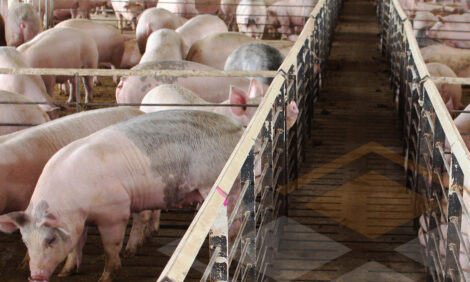



Dynamic Distribution and Tissue Tropism of Classical Swine Fever Virus
The virus causing classical swine fever (CSF) was likely to reproduce in blood, lymphoid tissue, pancreas and the ileum, according to scientists based in Beijing, who studied the course of infection in experimentally infected pigs.The dynamic distribution and tissue tropism of classical swine fever virus were studied in experimentally infected pigs by Jun Liu of the National Classical Swine Fever Reference Laboratory in Beijing and co-workers there and at South West University in Chongqing. The paper is published in Virology Journal.
CSF, caused by the classical swine fever virus (CSFV), is an Office International des Epizooties (OIE) notifiable disease, according to Liu and co-authors. However, the distribution, tissue tropism, pathogenesis, replication and excretion of CSFV in pigs are not yet fully understood. In this report, the researchers investigated the dynamic distribution and tissue tropism of the virus in internal organs of the experimentally infected pigs using real-time RT-PCR and immunohistochemistry (IHC).
A relative quantification real-time PCR was established and used to detect the virus load in internal organs of the experimentally infected pigs.
The study revealed that the virus was detected in all 21 of the internal organs and blood collected from pigs at day 1 to day 8 post-infection, and had an increasing virus load from day 1 to day 8 post-infection.
However, there was irregular distribution virus load in most internal organs over the first two days post infection. Blood, lymphoid tissue, pancreas and ileum usually contain the highest viral loads, while heart, duodenum and brain show relatively low viral loads.
All the data suggest that CSFV had an increasing virus load from day 1 to day 8 after infection in experimentally infected pigs detected by real-time RT-PCR, which was in consistent with the result of the IHC staining, concluded Liu and co-authors.
Their data also show that CSFV was likely to reproduce in blood, lymphoid tissue, pancreas and the ileum, while unlikely to replicate in the heart, duodenum and brain.
The results provide a foundation for further clarification of the pathogenic mechanism of CSFV in internal organs, and indicate that blood, lymphoid tissue, pancreas and ileum may be preferred sites of acute infection, added Liu and co-authors.
Reference
Liu J., X-Z. Fan, Q. Wang, L. Xu, Q-Z. Zhao, W. Huang, Y-C. Zhou, B. Tang, L. Chen, X-Q. Zou, S. Sha and Y-Y. Zhu. 2011. Dynamic distribution and tissue tropism of classical swine fever virus in experimentally infected pigs. Virology Journal, 8:201. doi:10.1186/1743-422X-8-201
Further Reading
| - | You can view the full report by clicking here. |
Further Reading
| |
- | Find out more information on swine fevers by clicking here. |
August 2011






